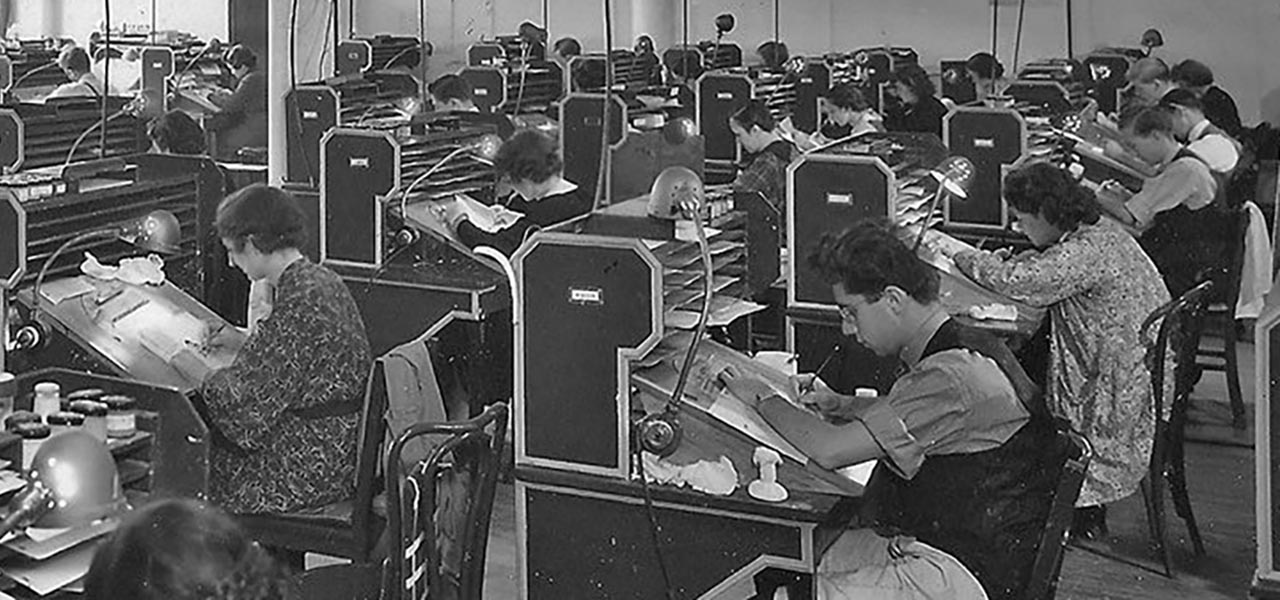

New Report Confirms Worst Fears: AI Will Disrupt Countless Animation Jobs Over Next 3 Years
There is little doubt that the emergence of generative artificial intelligence models will massively disrupt the future of the entertainment industry. This week, a new report outlined just how devastating the impact of Generative AI (GenAI) could be to artists over the next three years.
The report (downloadable here as a PDF) warns that GenAI “signifies a large-scale transition from existing techniques into new processes” and it will “likely rebalance the demand for labor and capital across the entertainment industries.”
For creative workers, this means they will be “facing an era of disruption, defined by the consolidation of some job roles, the replacement of existing job roles with new ones, and the elimination of many jobs entirely.”
The survey was conducted by consulting firm CVL Economics and co-commissioned by The Animation Guild IATSE Local 839, the Concept Art Association, the Human Artistry Campaign, and the National Cartoonists Society Foundation. It polled 300 bosses from six entertainment industries, including C-suite executives, senior executives, and mid-level managers. It was conducted between November 17 and December 22, 2023.
GenAI Is Not A Future Technology – It Is Here Today
Easily the most alarming takeaway from the study: GenAI is not a hypothetical technology that could impact film, gaming, and vfx artists at some distant date in the future. It is available right now and it is upending the entertainment industry today. In fact, two-thirds of the 300 business leaders who were surveyed expect GenAI to play a role in consolidating or replacing existing job titles in the coming three years (2024-2026).
An estimated 204,000 entertainment industry jobs will be significantly disrupted by generative AI over the next three years. This figure doesn’t include freelancer and contract workers, so the actual number of disrupted jobs is likely to be even greater than the scope of the survey. (The report considers a job disrupted when a sufficient number of tasks are either “consolidated, replaced, or eliminated by GenAI.”)

Of the 204,000 affected jobs, 118,500 of them are in the film, television, and animation industries, which represents 21.4% of the 555,000 jobs in the three areas. An additional 52,400 disrupted jobs are in the gaming industry, representing 13.4% of the 390,500 employed in the sector.
The most affected state is California, the hub of the American entertainment industry, which will see 62,000 creative jobs impacted, followed by New York (26,000 jobs) and Georgia (7,800 jobs).
How Open Are Entertainment Companies To Using AI?
Entertainment executives are literally frothing at the mouth to start implementing GenAI into their pipelines. Ninety-nine per cent of the people who took the survey said they plan to implement AI in the next three years. In fact, a quarter of companies surveyed indicated that they already had one or more GenAI program(s) in place, while 15% said they had concerns about GenAI programs and would only implement once those issues were resolved.
One percent of the survey takers said they weren’t planning to use GenAI within the next three years.
Who’ll Be Affected First?
Certain jobs in the animation and vfx industries will be more impacted than others. For example, among the one-quarter of companies that have already implemented GenAI programs, 44% of them are using the tech to assist in generating 3d models while 39% are generating character and environment design tasks.

Further, 33% of the survey takers predict that 3d modelers will be affected in the next three years, while 25% believed that compositors were vulnerable over the same time period. Only 15% said that storyboarders, animators, illustrators, and look/surface/material artists woulds experience job displacement by 2026.
Equally revealing is how entertainment firms are planning to use GenAI. Nearly half of respondents (47%) expect to use it for developing 3D assets, while 38% will use it for 2d concept art and storyboards. Thirty-five percent want to use it for creating animated characters (synthetic actors, in their terminology) for film/tv, while 31% want to use it for writing scripts.

More Takeaways And Conclusion
For its part, The Animation Guild issued a list of key findings from the report that included some eyebrow-raising responses:
- Three-fourths of respondents said that GenAI tools, software, and/or models have already supported the elimination, reduction, or consolidation of jobs in their business division.
- Over 90% of respondents believe GenAI will play a larger role in the entertainment industry, though only 26% of surveytakers felt that their company was fully prepared for the integration of GenAI into their workflows.
The report ends with this suggestion for entertainment industry decision-makers:
The future is not yet written, and it needn’t be generated by AI. It is important to remember that GenAI output is constrained by its inputs. If the responsibility to generate content shifts away from humans to machines, which can currently only formulate output based on previously created content, the availability and uniqueness of new content brought into the world will become more limited. It is critical that those in leadership positions, especially in entertainment industries, keep this top of mind and ideate on ways that new technologies can expand human creativity, not replace it
